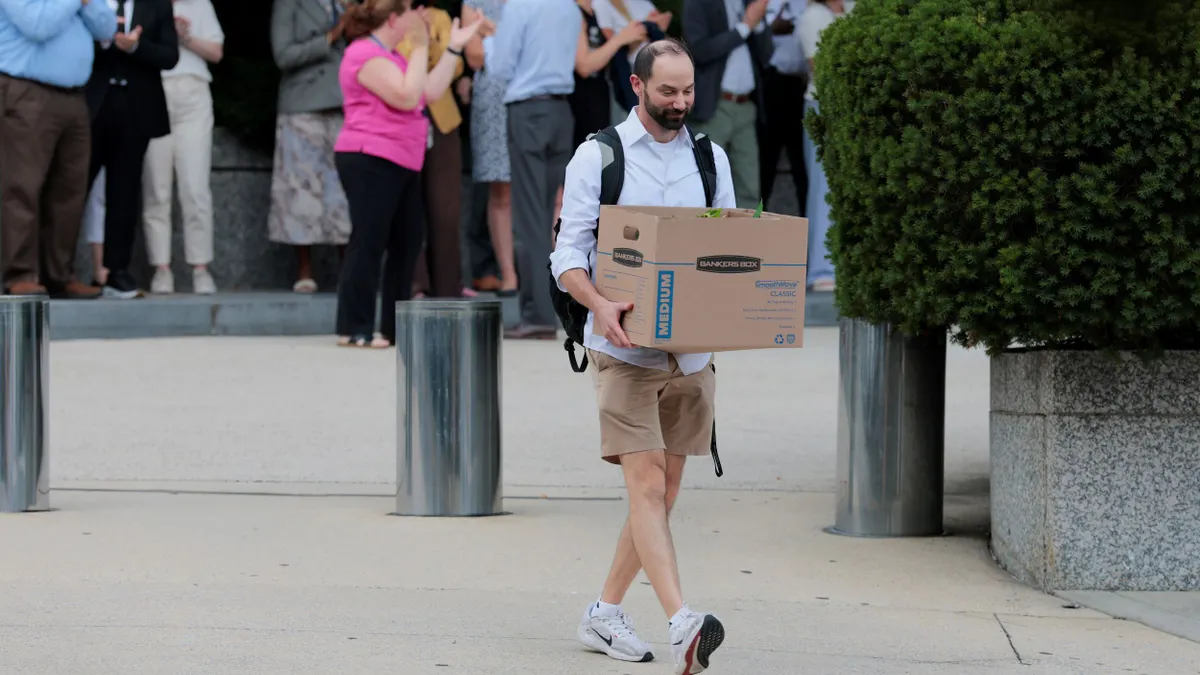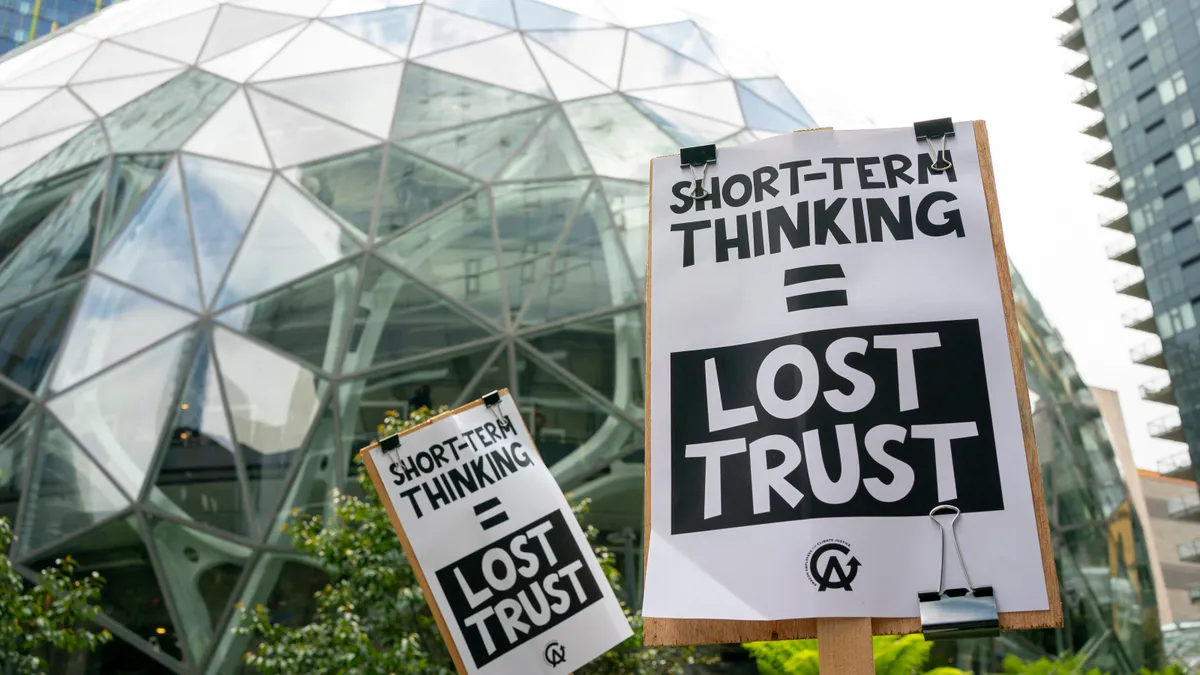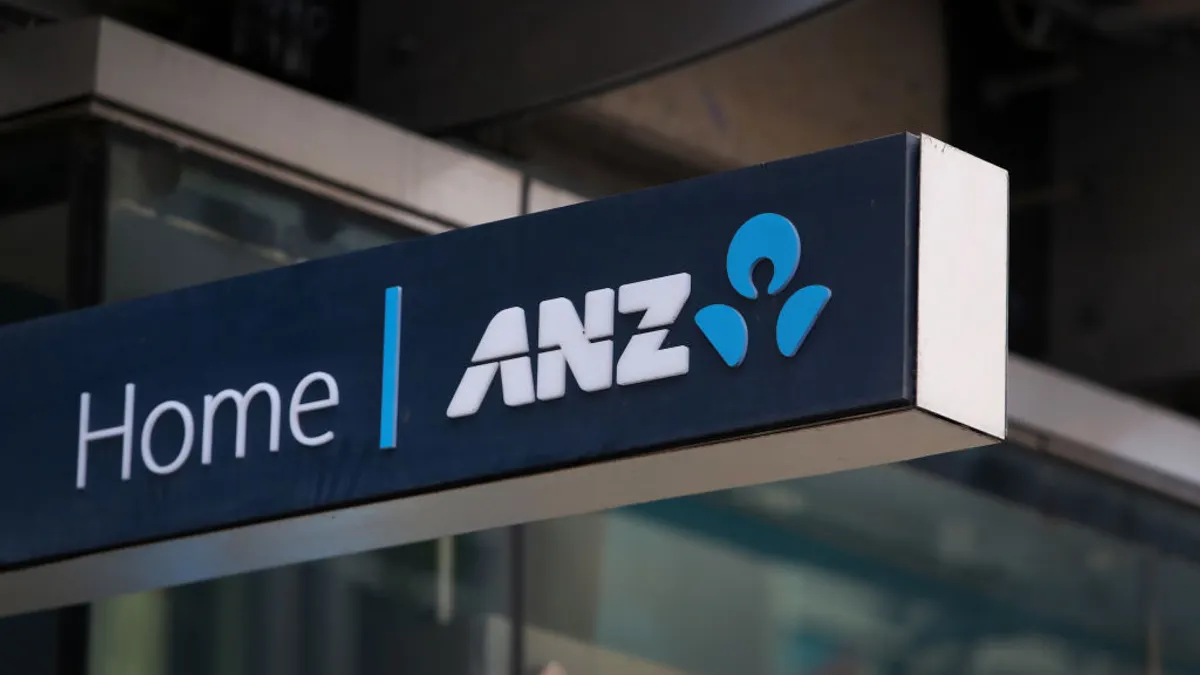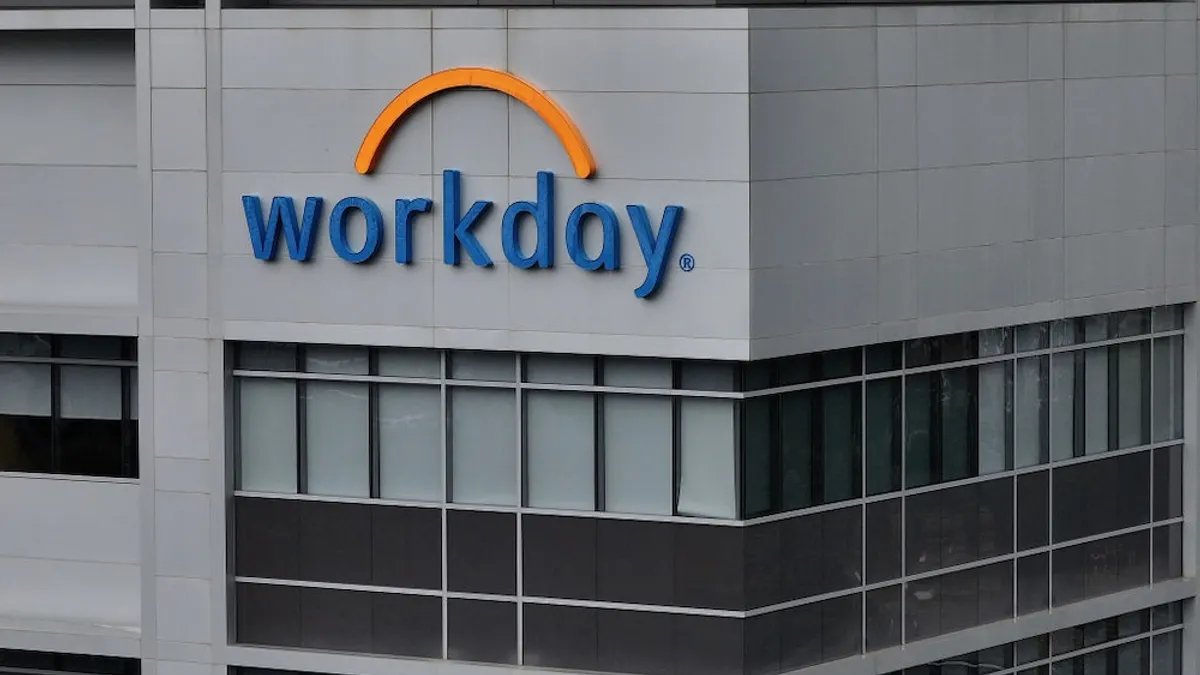Mass shootings in public places have become an unfortunate reality in American life. Schools and universities, places of worship, grocery stores: Almost no public gathering place has gone unscathed, including the workplace.
While the HR department may not have fortunetelling abilities, there are strategies leaders in the space can implement to better predict and maybe even forestall a workplace tragedy, Tom Miller, CEO of ClearForce, told HR Dive.
ClearForce is a people risk technology business designed to address multiple facets of safety and security in the workplace, from cybersecurity threats and property damage to harassment and suicide risk. The platform is meant to allow organizations to intervene quickly if workers cite red flags from colleagues or the software detects troubling information, like a threatening social media post.
Organizations become vulnerable in part because “they tend not to be proactive,” Miller said. “They’re reacting to problems that have advanced pretty significantly, rather than trying to pick up on earlier indicators [when] they’ve got more options and a better chance to course correct.”
Consider anonymity
If a workplace has an HR department, it has likely also encouraged those with complaints to bring them to HR. Unfortunately, many employees’ negative past experiences with HR — or tales of bad experiences from friends, family or just the broader culture — mean workers are hesitant to approach the department with concerns.
According to a 2020 survey from Zenefits, 35% of workers who avoided HR said it was because they didn’t trust the department to help, while 31% said they feared retaliation. A Workhuman survey from around the same time found that those who have been sexually harassed at work are even more likely to avoid HR. Fewer than half had reported their harassment and among those that had, 30% said their claims weren’t investigated.
Miller said he supports anonymous reporting, which can encourage more feedback. It can, however, create a situation in which one party potentially needs to defend itself without knowing where accusations are coming from — an opportunity that may be ripe for exploitation by bad actors. In a typical HR investigation, both parties are usually interviewed and asked to provide any corroborating evidence.
Companies can manage this one-sided aspect through an especially detailed series of questions that the reporting employee fills out, Miller said. That way, “even if you’ve got an anonymous report submitted, you’re capturing as much of the information as you possibly can to verify whether it’s valid or not,” he explained.
Getting employees to report worrying behavior quickly is a big piece of the puzzle. Those who escalate to gun violence often demonstrate behavioral problems in the days or months leading up to an attack.

A man who opened fire and killed 12 in a Virginia Beach municipal building in 2019 had begun acting strangely and getting into physical “scuffles” with co-workers in the days leading up to the attack, The New York Times reported; and just down the road, a late 2022 shooting at a Chesapeake, Virginia, Walmart was preceded by reports of disturbing behavior from the gunman, an employee at the store. After the shooting, three workers filed lawsuits, saying they had warned Walmart about the suspect and that the location had failed to safeguard employees.
Widen the net
But there are other ways to capture red flags beyond relying on co-worker reports, Miller said. Employers can use a system that collects information about employees’ out-of-work interactions with law enforcement, for example. While many companies conduct a background check at the beginning of an employee’s tenure, this ends most employers’ collection of such data.
Employers also can have a system monitor for financial strain that can affect employees’ well-being, such as experiencing a home foreclosure. Unmanaged financial stress can be a big indicator that leads employees down a path to gun violence, Miller said. In the case of the recent shooting at a mushroom farm in Half Moon Bay, the shooter told law enforcement he was enraged by a $100 bill he was expected to pay to repair a forklift, which he felt was not his responsibility. Subsequent reporting revealed squalid conditions for many of the farmworkers. Strikingly, the same farm endured a different gun attack from a worker just months before the January shooting.
Social media platforms can also surface warning signs, Miller said. In the past few years, shooters have occasionally announced their plans, posted manifestos or posted threats in the weeks or days leading up to an attack.
Miller said the social media space can be especially tricky for organizations, as employers typically don’t want to sift through thousands of employees’ posts each week, which can be time-consuming and feel invasive. “They’re trying to find that balance, right?” he said. “Like, they don’t want an after report where they’ve had a workplace shooting, and the obvious thing is, ‘It took me five minutes to Google and find this public threat against this individual. Why didn’t you know that?’”
ClearForce, for example, uses data analytics to scan employees’ social media for key phrases that would raise a red flag. Even then, he said, someone — typically an employee in the organization’s legal department — would need to evaluate further for context.
With so much data being analyzed, Miller knows privacy may be a major concern for both workers and employers. Transparency is paramount in maintaining worker trust in such an environment, he said. “Be clear on the policies and the programs that are in place,” he said. “And then make sure you’ve got employee consent as part of it so that they’re all signed up.”
Employers adopting monitoring should introduce it as part of a worker’s onboarding process — or when an employee is deciding whether to accept an offer — and continue to remind them of its availability and use and which data it collects.
It may also help to let employees know that the system is streamlined, limited and only provides what employers may need to know — rather than a data collection free-for-all. “We have no customers where, you know, they’re interested in some super broad capture of information or where they’re trying to be intrusive,” Miller said. “Everybody wants to limit it down to just what’s the most relevant, high-risk information that [they] need to know because [they’re] worried about workplace violence or … cybersecurity or … the mental health and wellness of our employee base.”
Employers should also emphasize the purpose of the program, he said: keeping the workplace safe and providing employees support in times of struggle. “Then it becomes a shared objective within the organization as opposed to an us-versus-them scenario with, let’s say, management and the employee base,” Miller said.
Intervene early
Assuming the HR department does get word of a concern, how should it proceed?
Having a standardized plan of action is important, Miller noted, to ensure organizational compliance and eliminate the potential for discrimination. Bringing in stakeholders like the legal department can help protect both employers and workers in dealing with a complaint.
A centralized, documented process for review of reports also can be key. “When people are submitting these incident reports, typically that’s going to go into HR and they’ll have one or multiple people that are assigned roles to be able to receive it,” Miller explained. “And then importantly, everything that comes in is timestamped, it’s logged, it has a retention process — it’s a workflow. So somebody may initially view it and decide that there needs to be more investigation or more action, and it’s moved to a new role, and a new person can look at it.”
One of the first things people ask in the wake of workplace tragedy is, “Who knew?” Miller said. “More times than not, companies just don’t have that information in hand,” he said. “Part of the important process that we’re supporting here is that … it’s all proactive, it’s all systemic. It’s all locked down and there’s a full audit trail.”
Different scenarios clearly call for different approaches. If an employee is undergoing financial stress, for example, the employer may opt to connect her to resources and benefits that can help — a financial counselor, for example. If a worker posts a violent threat or plans for violence online, on the other hand, the organization may need to spring into action to protect workers at the office or elsewhere from immediate danger.
Ideally, Miller said, organizations can identify and respond to warning signs long before behavior escalates into tragedy. Alarming behavior “is probably not a single thing,” he said. “It’s probably a pattern of activity that’s occurring over a period of time. But at some point, that pattern is going to rise to a level where the organization’s going to say, ‘Hey, there’s something going on here. And there’s concern and risk for the safety of people in the organization.’”




















